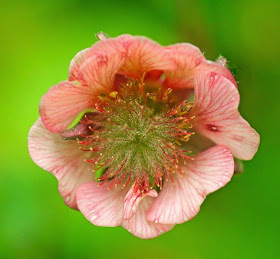
An old oak tree rooted in a rock face at Plankey Mill in Northumberland.
Sycamore, beside the river Tees at The Meeting of the Waters in Teesdale, where winter floods scoured the soil away, exposing the roots ...
.... so that a lot of tree seems to be balanced on quite a small root system!

Young beech roots at Allen Banks in Northumberland, again exposed by water erosion. Interestingly, you can see how the roots autograft on to each other when they come into direct contact. In a few decades it might look like this....

.......a wonderful mature beech near Wolsingham in Weardale, where the mass of autografted roots seem almost to have melted into the ground.
The hollows formed where roots have grafted onto one another often house small pools of water, known as phytotelmata, which are home to transient communities of small organisms. These mini-ponds, trapped in a cavity formed by the coalesced roots, can contain vast numbers of small organisms, feeding in bacteria and fungi growing on the rotting leaves trapped in the water. The pool is fed by rivulets of water that trickle down the trunk when it rains. Temporary pools of water trapped in plants like this are known as phytotelmata. The pools in this beech tree's roots hosted nothing larger than rat-tailed maggots - the larval stages of drone flies. But while the species diversity in the beech-tree pool might have been low, the sheer abundance of the tiny single-celled protists that are present can be staggering ..............
These little organisms, taken from one of these beech root pools, are called Colpidium
colpoda. They're single-cell protists that
swim with incredible speed using ciliary hairs on their surface, that beat in
rhythm. Here they're magnified one hundred times. This single drop of
water on a microscope slide probably contained about five hundred...
Here they are magnified two hundred times. The circles that
you can see in some of them are contractile vacuoles that constantly expel water from the cell cytoplasm.
At 400 times magnification you can see the fine
cilia (top right) that are arranged in rows over the surface of the
cell - you can just make out their dark parallel lines and you can also
see algae that the Paramecium has ingested, inside the cell.
Static images don't really do justice to the helter-skelter
movement of these little protists, so click here and click here to take a look at these two video clips of this sample, which give a much better impression of what is going on in those little temporary pools of
water that you find trapped in beech tree root systems.





























.jpg)






























.jpg)

